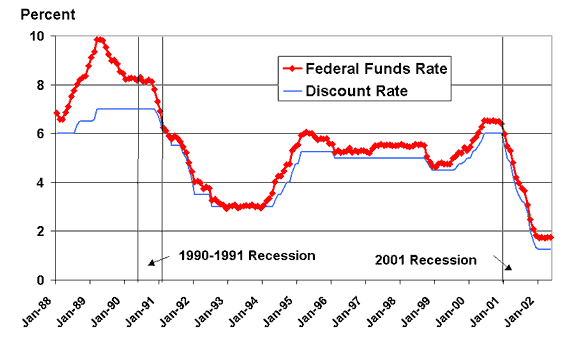Introduction
The banking industry is one of the most vital sectors of an economy. In the United States (US), it is even more important due to the fact that the US is the world’s richest country. In 2004, the United States recorded a Gross Domestic product of about $11 trillion, which is equal to about $38000 per capita (Aaron & John, 2005). Two main types of banks feature in the United States: regional or thrift banks and the Major or Mega banks. Regional banks refer to the relatively smaller financial institutions whose primary focus is on a single geographical region. In addition, their primary occupation is provision of lending and depository services. Elsewhere, mega banks are focused in financial centers and involve themselves in international dealings as well as underwriting; these banks may also run branches at the local level.
It is unimaginable to think of an economy without banks. In the first place, banks are the “cornerstones of our economy” (Investopedia, 2009). Therefore, the banking industry is responsible for risk transfer, liquidity provision, facilitation of both minor and major financial transactions, and provision of financial information to businesses and individuals. Although the primary role of banks is to take deposits and offer loans, the conventional distinctions between security firms, insurance firms, and banks have in recent times shrunk. In summary, banks safeguard valuables and money as well as provide credit, loans, and payment services; in addition, they also offer insurance and investment products.
Shifts and price elasticity of supply and demand
Both shifts and price elasticity in supply and demand curve affect the banking industry. The change in price and quantity equilibrium is affected by the shift of the supply and curves.

In the above diagram, a decline in preference for the banking services would cause the demand curve to shift from D1 to D2. However, the provision of services remains unchanged in the short run until, for instance, export of the banking services is altered causing the service providers to focus on local markets and subsequently, resulting in the supply curve shift from S1 to S2. Consequently, the equilibrium would change from e1 to e2. Depending on how the demand and supply curves shifts, there is a likelihood of quantity and price fall within the banking industry.
Price elasticity is “a measure of responsiveness” (Karl & Ray, 1999) in quantity either supplied or demanded of a commodity due to alteration in its price. Price inelasticity of demand means that the percentage adjustment in demanded quantity is lesser than that of price, while price elasticity in demand shows that adjustment is greater in quantity demanded than in price. Therefore, price elasticity affects the quantity and prices in the banking industry.
Positive and negative externalities
The banking industry is affected by both positive and negative externalities. Externalities can be defined in economic terms as impacts on a party or parties that are not directly linked to a decision of economic importance. In other words, positive or negative externalities are realized when economic activities result in benefits or costs to third parties who had no contribution or obligation in an economic event. Note that, these externalities may be decisions that are made within the banking industry it self.

Systemic risk, for instance, illustrates the risks the entire economy has to bear due to the risks taken by the banks. In this respect, the individual costs arising from failures in the banking system may be lesser than what the society pays for. Not that externalities arising from the banking industry may be a recipe for regulations (Rassou, 2007), a move which to some economists, is hazardous (Bandt & Hartmann, 1998). Generally, banks may benefit or share the costs of externalities from other sectors of economy.
The banking industry may some from the negative externalities that reduce the borrowing power of the society or that increase the level of security such as crime and fraud increase, destruction of properties, war, and corruption and so on. Negative externalities imply that the socially optimal output is lower than the current output.
The positive externality could include development of the national infrastructure such as information systems, security; development in human resource, research, and so on. All in all, external benefits indicate that socially efficient output exceeds the current outcome.
Wage inequality
Wage inequality has been an interesting trend in the US banking industry exhibiting a non-uniform direction. During the beginning of the 20th century, there was a huge rise in wage inequality for about 25 years. This effect can be attributed to the then increasing demand for highly educated workers in the management realm who subsequently earned higher wages. Furthermore, there was a reduction in some jobs especially for common workers like those whose work was to transport commodities between factories. As a result, their services were less valued in terms of compensation. Nonetheless, from the 1970’s, wage inequality across gender and race reduced. In fact, there was a dramatic increase in the number of women working in the banking industry. Unfortunately, the trend has taken a back turn in recent years to record acceleration in wage inequality.
Wage inequality has continued to characterize the banking industry despite remarkable economic growth in the US. Aaron and John (2005) assert that there has been “anxiety” about the “disparity in income”. Indeed, there has been a rising difference between the highly paid and the lowly paid work force for an extended period of time. Subsequently, the actual compensation for the labor force at the lower side of distribution has either remained stagnant or fell. Some of the reasons behind the recent rise of wage inequality are easily visible.
Innovation and globalizing have significantly impacted wage inequality within the banking sector. Largely, technical advancement especially in information technology contributed to the rise in wage disparity after the 1970s. Globalization, on its part, has positively impacted on the growth in innovation thereby indirectly affecting the dispersion in wages. All in all, it is important for regulatory bodies including the government to draft policies that are healthy and promote growth and development of the banking industry.
Monetary and fiscal policies
Monetary and fiscal policies are vital in determining the performance of an economy. It is worth noting that monetary policies are set by the central bank whereas fiscal policy is the concern of the “national government” (Federal Reserve Bank of San Francisco, 2007). What is more, these policies have a great impact on the economic aspect in the banking industry as they influence the national economy.
Fundamentally, stimulative monetary and fiscal policies are meant to enhance the economic growth rate or the Gross Domestic Product (GDP) in the near future whereas tight monetary and fiscal policies are set to slow the economy in future so as to balance the pressure brought about by inflation. In 2001, in order to stimulate the slowing economy, the United States undertook various fiscal and monetary measures. The Federal Reserve introduced significant cuts in the overnight interbank rates while the government implemented spending increases and tax cuts. Contrastingly, in 2000 and 1999 the country was experiencing an incredible economic growth with a likely unsustainable development and same inflation. Subsequently, therefore, the central bank sought to curb this event through increase in overnight interbank rates.

Besides the fact that these policies affect the banking industry directly, it is worth to note that the banking industry is highly influenced by the general economic status of a country. Furthermore, the interest rates determine the credit market or loans. Since, the main source of income for banks comes from lending of loans, wrong moves in relation to the Federal Reserve rates can cause the industry millions of money in losses.
The economy and the success of the banking industry
The economy plays a very vital role in the banking industry. The performance of an economy has a direct impact on the purchasing power of consumers. Generally, a strong economy would be characterized by increased buying power, an effect that impacts on the performance of the banking industry. A well performing economy will attract more investments and subsequently stimulate the credit market, which is the mantle of the banking industry. Furthermore, economic indicators are used in formulating policies that affect the industry.
Although there has been no effect on the price of the banking product due to fiscal and monetary policies, the spending increases, tax cuts and fiscal policies contributed greatly to the stimulation the slugging economy. Stimulating the economy positively affect the growth of the banking industry in the short run.
There are various economic factors that would have negative affects on the banking industry. One is inflation. High inflation rate can hamper economic growth (Federal Reserve Bank of San Francisco, 2007). Moreover, it becomes difficult to make predictions and interpretations about price changes of a specific product in the banking industry. High inflation is also characterized by a lot of variations thereby making it uncertain for people to predict the situation in the future. Increased uncertainty for the future hampers economic growth in several ways: “it adds an inflation risk premium to the long term interest rates” (Federal Reserve Bank of San Francisco, 2007), it obscures the contracting and planning by households and businesses, which are vital to formation of capital.
High inflation also twists economic decisions through random decrease or increase in returns’ tax rates to various economic activities; this is due to the fact that several components of tax system do not fall under the inflation index. So people end up spending resources and time while hedging against inflation as opposed to engaging in more activities that are, of course productive.
Additionally, “surprise inflation tends to redistribute wealth. For example, when loans have fixed rates, surprise inflation redistributes wealth from lenders to borrowers, because inflation lowers the real burden of making a stream of payments whose nominal value is fixed” (Federal Reserve Bank of San Francisco, 2007).
The status of the economy dictates to a large extent the survival of small banks and new entrants in the banking industry. It is worth noting that institutions that opt to provide some of the services reserved to banks would pose a great threat to the existing banks. In this respect, it is vital for banks to position themselves in the market to avoid being shaken by such occurrences. All large banks that are well managed are known to withstand such tests.
Conclusion
The banking industry is crucial for an economy and it is also sensitive to the economy. In this respect, the formulation of both fiscal and monetary policy should take a closer look at the banking industry. Note that the banking industry supports most of the sectors of the economy through the credit facility. Therefore, it is one area that policy makers should never ignore but should ensure is managed efficiently.
Reference
Aaron, S. & John, W. A. (2009): What’s Driving Wage Inequality? BNet Business Network. Web.
Bandt, O. & Hartmann, P. (1998): Risk Measurement and Systemic Risk, 2009. Web.
U.S. Department of Labor, Bureau of Labor Statistics (2009): Career Guide to Industries, Edition, Banking, Web.
Federal Reserve Bank of San Francisco (2007): About the Fed, 2009. Web.
Federal Reserve Bank of San Francisco (2007): What is the difference between fiscal and monetary policy, 2009. Web.
Gary, F. S. (2002): Accounting for Income Inequality. School of Industrial Relations, 2009. Web.
Investopedia (2009): The Industry Handbook: The Banking Industry, Web.
Karl, C. E. & Ray, F. C. (1999): Principles of Economics, 5th edn., Prentice-Hall, New York.
Mankiw, N. G. (2004). Principles of economics (3rd ed.). Chicago, IL: Thomson South-Western.
Rassou, P. (2007): Is the banking industry falling prey to its own success? 2009. Web.